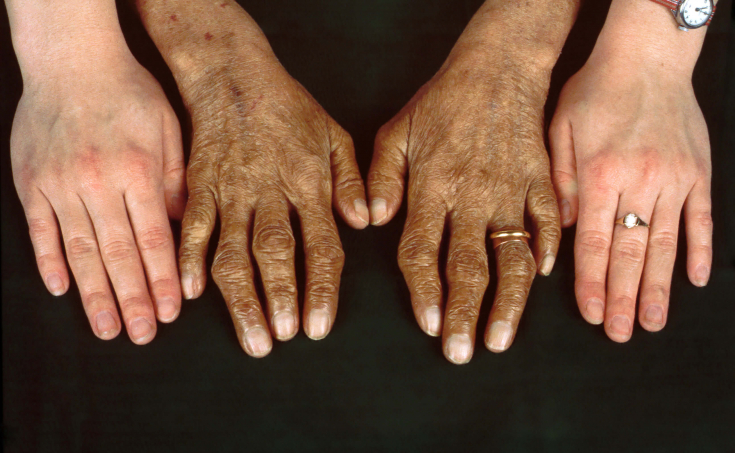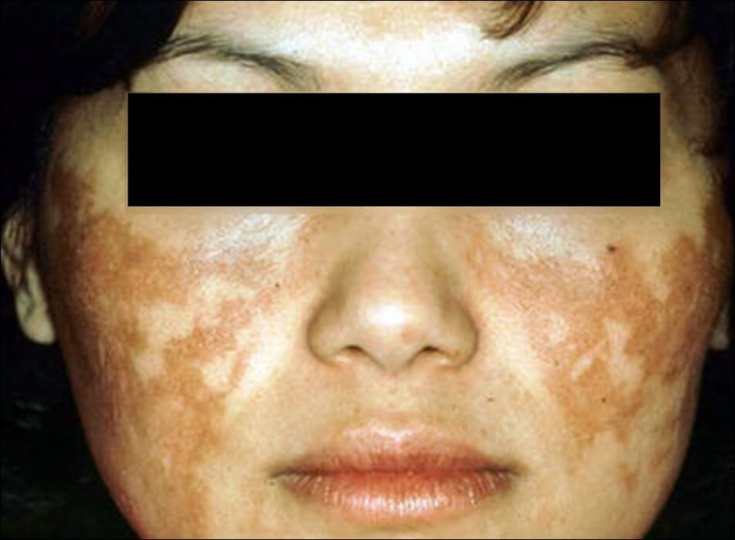Hereditary Hemochromatosis (HH) − one of the most common, genetically determined diseases. In recent years, significant progress has been made in the diagnosis and treatment of this pathology.
Thus, the availability of molecular diagnostic testing of hemochromatosis made it possible to timely diagnose this disease in most patients. The widespread use of non-invasive tests such as magnetic resonance imaging (MRI) has facilitated the quantification of hepatic iron and eliminated the need for liver biopsy in patients with hemochromatosis.
Find out in the article on estet-portal.com what skin signs are observed in this pathology, as well as about possible causes and modern methods of treating hemochromatosis.
- Clinical features of hemochromatosis
- Skin manifestations of hereditary hemochromatosis
- Approaches to the diagnosis and treatment of hemochromatofor
Clinical features of hemochromatosis
The complexity of diagnosing patients with hemochromatosis lies in the variety of clinical manifestations of the disease. Fatigue and arthralgias are among the most common manifestations and occur early in the disease, however, up to 18% of men and 5% of women may have signs of liver iron overload in the absence of specific clinical symptoms.
Follow us on Instagram!
Manifestations of the disease usually occur earlier in males than in females. Mean age of onset is 40-50 years.
In women, clinical manifestations usually appear in the postmenopausal period, due to the loss of iron during menstruation, during pregnancy and lactation, which compensates for the increased absorption of iron during this time.
Skin and indigestion: what's the connection
Definition of common terms:
1. Hepcidin: a hormone synthesized and secreted by the liver in response to circulating iron levels, its function is to reduce iron absorption from intestinal mucosal cells by degrading feroportin-1.
2. Feroportin-1 (FPN): a transmembrane protein that is found predominantly in intestinal epithelial cells, hepatocytes, and macrophages and promotes iron export from cells.
Depigmentation and photoprotection as essential components of post-peel care
3. Transferrin: a glycoprotein synthesized by the liver whose main function is to transport iron from its absorption site (small intestine) to its use or storage site (bone marrow, liver, spleen).

4. Latent (unsaturated) iron-binding capacity (LHC): amount of "reserve" transferrin contained in human blood, which is able to bind to iron. Low latent iron binding capacity raises suspicion of hemochromatosis.
5. Ferritin: intracellular protein that stores and releases intracellular jellyzo.
Skin manifestations of hereditary hemochromatosis
The iron stores in the body are regulated at the level of iron absorption in the intestines, since there are no physiological processes for removing excess iron in the body, except for the loss of menstrual blood and due to the exfoliation of old cells of the intestinal mucosa or epidermal cells.

One of the early skin signs of hemochromatosis may be hyperpigmentation. The deposition of excess iron in the skin leads to increased production of melanin and its accumulation in the skin, and this, accordingly, gives a bronze tint to the skin.
Hypermelanotic pigmentation of the skin is usually generalized, but often localized on the face, neck, extensor surfaces of the forearms, inner surface of the hands, shins and genitalsax.
This hyperpigmentation is best identified by comparing the extensor surface of the forearm with the skin of a healthy person.
Approaches to the diagnosis and treatment of hemochromatosis
:
measuring the level of iron in the blood serum;- Determination of serum transferrin, serum ferritin, and VHF levels.

Thus, ferritin is an important predictor of the course of liver fibrosis, but
it is not a specific screening testbecause hyperferritinemia can also be associated with other pathologies, including alcoholic liver disease, HCV, and neoplastic diseases.
How can vitamin C increase collagen synthesis and eliminate hyperpigmentation? Patients with hemochromatosis should
avoid vitamin C supplementsas ascorbic acid increases iron absorption. There are currently
three chelating agentsapproved by the US Food and Drug Administration (FDA) for the treatment of secondary iron overload:
deferoxamine;- deferiprone;
- deferasirox.
- An alternative method of phlebotomy in this pathology is also
. This method is especially recommended for patients with hypoproteinemia or thrombocytopenia, because it selectively removes only red blood cells, while other components of the blood (plasma proteins, blood clotting factors and platelets) are returned to the bloodstream.
More interesting information on our







